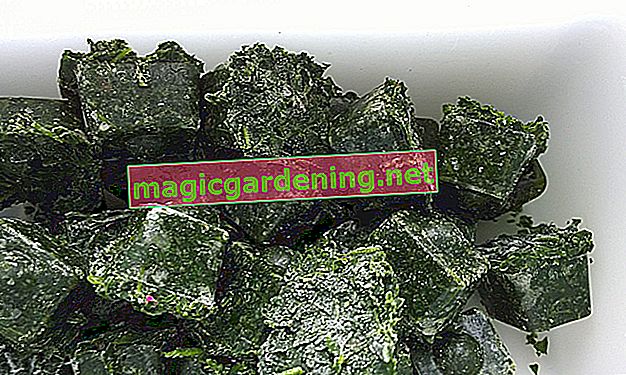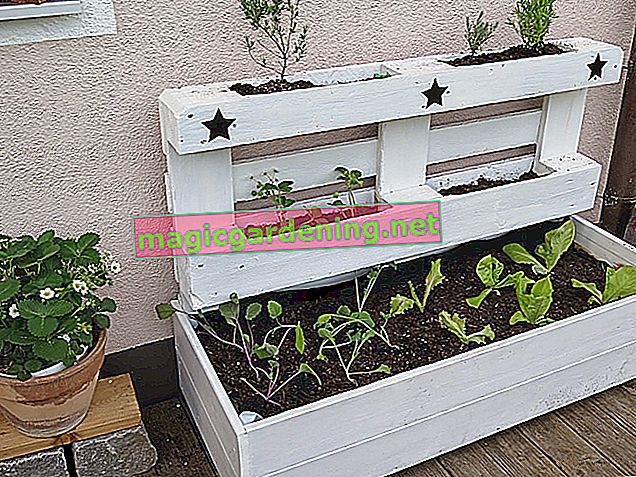
Which palm trees are allowed outside?
When buying, make sure that the palm is hardy and can withstand higher temperatures. This is usually noted on the plant label.
also read
- Palm trees conjure up a Mediterranean flair on the balcony or terrace
- A lemon tree in the garden creates a Mediterranean flair
- Column cypress conjures a Mediterranean flair in the garden
Which location is suitable?
Even frost-resistant palms should not be used randomly anywhere. Give the plant as sunny a location as possible, for example in front of the additional protective, south-facing house wall.
The place should also be protected from the wind. Constant breezes do not do the leaflets well and they would look torn after a very short time.
For the same reason, you shouldn't put the plant too close to a path. Well-manicured palms can grow very large over the years. Then keep bumping into the leaves as you walk past, bend them, dry them up and get shed. This can seriously affect the appearance.
Plant the palm tree in the garden
Palms form roots that are not very branched, but that reach far down. Therefore, proceed as follows when inserting:
- Dig a planting hole that is eight inches wider and at least eight inches deeper than the root ball.
- In impermeable soils, dig an even larger pit and insert a drainage layer of sand or gravel.
- Fill the hole with palm soil that you have mixed yourself or that you have purchased from specialist retailers, enriched with a little bark mulch.
- Pot the palm very carefully, taking care not to damage the roots.
- If the pot does not come off the ball, cut it open and do not tear the roots.
- If the roots have already grown in a spiral at the lower end, shorten the roots so that they fit vertically into the pit.
- Place the palm in the planting hole and fill it with palm soil.
- Condense carefully. Just press the floor firmly with the edge of your hand, this is sufficient.
- Only fill in enough soil that the edge is a few centimeters below the surrounding garden soil or, alternatively, create a watering ring.
In regions where there is a risk of severe frosts, it is advisable to dig the planting hole a little larger and to provide it with upright, insulating hard foam panels. The soil below the root ball remains free so that the deep root can develop.
In winter, cover the ground around the palm thickly with bark mulch, straw or brushwood. Palm trees usually freeze to death at the roots, the insulating layer and the panels keep the heat in the ground and prevent frost damage. An additional, special plant heating cable is recommended if the palm is in regions where the temperature drops sharply over several weeks.
Tips
If there is no place in your garden to cultivate the palm in the open all year round, you can also place the plant in a suitable location in the pot, move it into the house in the fall and overwinter in the apartment.









